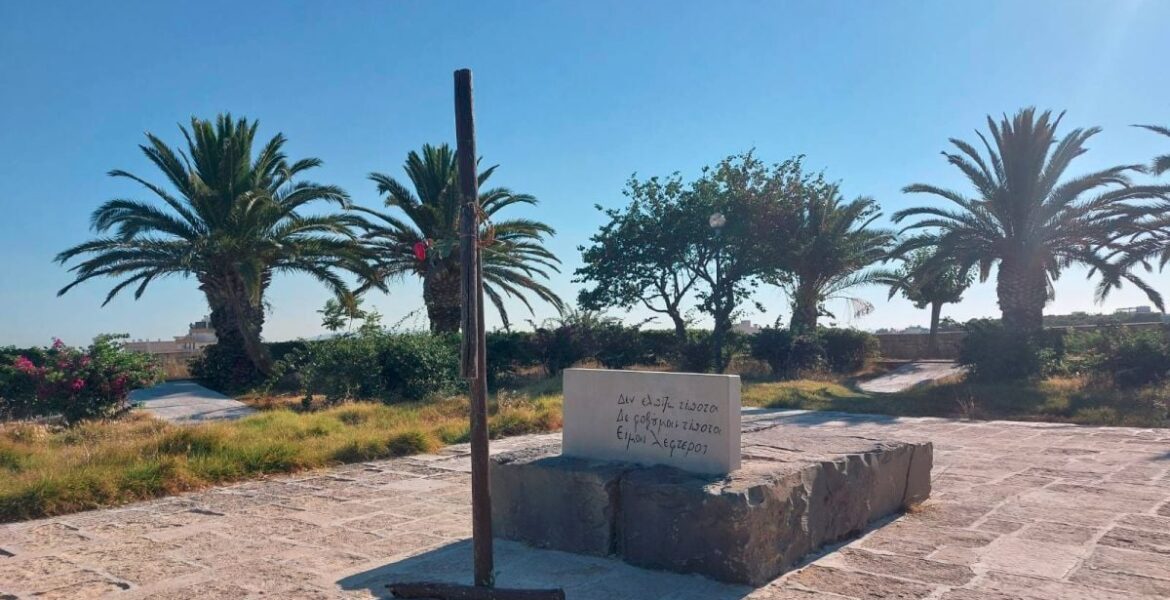Recently, unidentified individuals vandalized the grave of Nikos Kazantzakis, one of Greece's most celebrated and beloved authors. Situated within the walls of his hometown, Heraklion, on the picturesque island of Crete, the tomb was targeted as the wooden cross affixed to it was deliberately broken by the vandals.
Katerina Zografistou, the president of the Greece Branch and a member of the Coordinating Committee of the International Society of Friends of Nikos Kazantzakis, expressed her deep sadness and disappointment regarding this act of vandalism. She emphasized that such an act not only dishonors the memory of a great Greek writer but also shows disrespect towards the country's rich cultural heritage.
Zografistou stated, "Respecting our monuments is not just a choice but our obligation; otherwise, we do not deserve to have renowned writers or monuments." Her firm stance highlights the importance of safeguarding cultural landmarks as symbols of national pride and literary excellence.
Aristea Plevri, the vice mayor of culture in Heraklion, assured that the municipality's technical service would swiftly restore the damage inflicted on Kazantzakis' tomb. The tomb attracts a multitude of visitors daily who come to pay their respects to the legendary author, renowned for works like Zorba the Greek.
Authorities are currently investigating the motivations behind this brazen act of vandalism, with the police committed to identifying the culprits responsible for defiling the final resting place of an esteemed literary figure.
The Iconic Literary Works of Nikos Kazantzakis: Exploring Universes of Zorba the Greek, Christ Recrucified, and More
Nikos Kazantzakis, an esteemed Greek author, is widely recognized for his unforgettable novels, including Zorba the Greek (1946), Christ Recrucified (1948), Freedom and Death (1950), The Last Temptation of Christ (1951), and Report to Greco (1961), a unique blend of autobiography and fiction.
Among his literary repertoire, Kazantzakis himself regarded The Odyssey: A Modern Sequel as his most significant masterpiece. This epic poem, comprising an astounding 33,333 verses, underwent seven meticulous revisions before its publication in 1938. Fellow Greek author Pantelis Prevelakis aptly described it as "a superhuman effort to record his immense spiritual experience."
Despite Kazantzakis' devout nature and the omnipresence of Jesus in his works, The Last Temptation of Christ drew condemnation from the Church of Greece. This novel was even included in the index of prohibited books by the Roman Catholic Church.
In 1957, Kazantzakis passed away at the age of 74, succumbing to leukemia. However, his legacy lives on. His final resting place lies within the walls surrounding Heraklion, his hometown, near the Chania Gate. The Greek Orthodox Church forbade his burial in a traditional cemetery. A famous quote, "I hope for nothing. I fear nothing. I am free," graces his epitaph, emblematic of his profound philosophy.
Kazantzakis' literary contributions continue to captivate readers worldwide, transcending boundaries as testaments to his extraordinary imagination and spiritual introspection.

